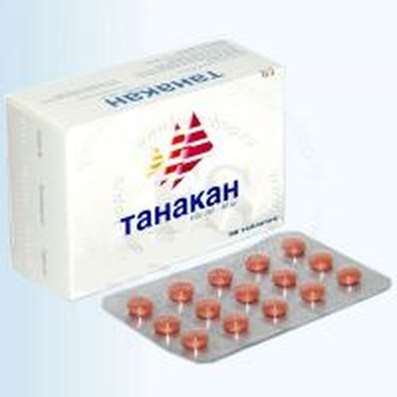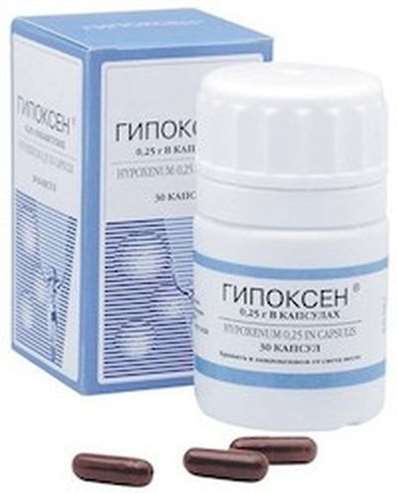Instruction for use: Tamerit
I want this, give me price
Active substance Aminodihydrophthalasindione sodium
Pharmacological group
Other immunomodulators
Nosological classification (ICD-10)
D84.9 Immunodeficiency, unspecified
Pneumonia in immunodeficiency states, Autoimmune disease, Autoimmune diseases, Significant immunodeficiency, Immune Deficiency, Immunodeficiency, Immunodeficiency diseases, Immunodeficiency conditions due to surgical intervention, Immunocorrection for cancer, Immunomodulation, Infections in Patients with Weakened Immunity, Correction of immune deficiency, Correction of immunodeficiency states, Correction of weakened immunity, Correction of weakened immunity in immunodeficient states, Impaired immunity, Infringement of the immune status, Impaired immune system, Primary immunodeficiency, Maintenance of immunity, Reduction of protective forces, Decreased immunity, Decreased immunity for colds and infectious diseases, Decreased immune status, Reduced resistance to infectious diseases, Reduced resistance to infectious and catarrhal diseases, Reduced resistance of the body, Low immunity, Predisposition to colds, Acquired immunodeficiency, Radiation immunodeficiency, Development of immunodeficiency, The syndrome of immune dysfunction, Immunodeficiency Syndrome, Syndrome of primary immunodeficiency, Reduction of body defenses, Decreased immunity, Decreased body immune defense, Decreased local immunity, Decrease in the total body resistance, Reduction of cellular immunity, Reduced resistance to infections in children, Decreased body resistance, Reduced body resistance, Reduced immunity, The state of immunodeficiency, Stimulation of the processes of nonspecific immunity, Severe secondary selective immunodeficiency, Inhibition of immunity, Primary immunodeficiency states
R68.8.0 * Inflammatory syndrome
Painful syndrome of inflammatory genesis, Pain syndrome with inflammation of non-rheumatic nature, Pain syndrome with inflammatory lesions of the peripheral nervous system, Painful inflammation of the shoulder joint, Painful inflammation after trauma or surgery, Painful inflammation after surgery, Painful hemorrhoids, Inflammation of the tympanic membrane, Inflammation of the larynx, Inflammation of the gums, Inflammation of cellulose, Inflammation of lymph nodes, Tonsillitis, Inflammation of muscles, Inflammation of soft tissues, Inflammation of the mouth, Inflammation after surgery and trauma, Inflammation after orthopedic surgery, Inflammation after trauma, Inflammation in rheumatoid arthritis, Inflammation of the middle ear, Inflammatory gum disease, Inflammatory diseases of the eyelids, Inflammatory eye diseases, Inflammatory swelling of soft tissues, Inflammatory processes, Inflammatory processes after surgical interventions, Inflammatory process, Inflammatory Syndrome, Inflammatory syndrome of non-rheumatic origin, Inflammatory syndrome after surgery, Purulent infections, Infringements of function of a liver of an inflammatory etiology, Acute inflammation of the musculoskeletal tissue, Pre-inflammatory soft tissue inflammation
Z100 * CLASS XXII Surgical practice
Abdominal surgery, adenomectomy, Amputation, Coronary angioplasty, Angioplasty of the carotid arteries, Antiseptic skin treatment for wounds, Antiseptic Hand, Appendectomy, atherectomy, Balloon coronary angioplasty, Vaginal hysterectomy, The coronary bypass, Interventions in the vagina and cervix, Interventions on the bladder, Intervention in the mouth, Restoration and reconstructive surgery, Hand hygiene of medical personnel, Gynecologic surgery, Gynecological intervention, Gynecological surgery, Hypovolemic shock during operations, Disinfection of purulent wounds, Disinfection of wounds edges, Diagnostic intervention, Diagnostic procedures, Cervical Diathermocoagulation, Long-surgery, Replacing the fistula catheters, Infection in orthopedic surgery, Artificial heart valve, cystectomy, Short-term outpatient surgery, Short-term operation, Short surgical procedures, Krikotireotomiya, Blood loss during surgery, Bleeding during surgery and in the postoperative period, Kuldotsentez, laser photocoagulation, laser coagulation, retinal laser coagulation, Laparoscopy, Laparoscopy in Gynecology, CSF fistula, Small gynecological operations, Small surgical procedures, Mastectomy and subsequent plastic, mediastinotomy, Microsurgical operations on the ear, Mukogingivalnye operation, suturing, Minor surgery, neurosurgical operation, Immobilization of the eyeball in ophthalmic surgery, testectomy, pancreatectomy, Perikardektomiya, The period of rehabilitation after surgery, The period of, convalescence after surgery, Percutaneous transluminal coronary angioplasty, Pleural thoracentesis, Pneumonia postoperative and posttraumatic, Preparation for surgical procedures, Preparation for surgery, Preparation of the surgeon's hands before surgery, Preparation of the colon for surgical procedures, Postoperative aspiration pneumonia in neurosurgical and thoracic surgery, Postoperative nausea, Postoperative bleeding, postoperative granuloma, postoperative shock, The early postoperative period, myocardial revascularization, Radiectomy, gastric Resection, bowel resection, uterine Resection, liver Resection, enterectomy, Resection of part of the stomach, Reocclusion of the operated vessel, Bonding tissues during surgical procedures, Removal of sutures, Condition after eye surgery, Condition after surgery, Condition after surgery in the nasal cavity, Condition after gastrectomy, Status after resection of the small intestine, Condition after tonsillectomy, Condition after removal of the duodenum, Condition after phlebectomy, Vascular surgery, Splenectomy, Sterilization of surgical instruments, Sterilization of surgical instruments, sternotomy, Dental surgery, Dental intervention in periodontal tissues, strumectomy, Tonsillectomy, Thoracic surgery, total gastrectomy, Transdermal intravascular coronary angioplasty, Transurethral resection, Turbinektomiya, Removal of a tooth, cataract surgery, Removal of cysts, tonsillectomy, Removal of fibroids, Removing the mobile primary teeth, Removing polyps, Removing broken tooth, Removal of the uterus body, Removal of sutures, Urethrotomy, Fistula likvoroprovodyaschih ways, Frontoetmoidogaymorotomiya, Surgical infection, Surgical treatment of chronic limb ulcersm, Surgery, The surgery in the anal area, The surgery on the colon, Surgical practice, The surgical procedure, Surgical interventions, Surgery on the gastrointestinal tract, Surgical procedures on the urinary tract, Surgical procedures on the urinary system, Surgical intervention of the genitourinary system, Surgical procedures on the heart, Surgical manipulation, surgery, Surgery on the veins, Surgical intervention, Vascular surgery, Surgical treatment of thrombosis, cholecystectomy, Partial gastric resection, transabdominal hysterectomy, Percutaneous transluminal coronary angioplasty, Percutaneous transluminal angioplasty, Coronary artery bypass, tooth Extirpation, Extirpation of milk teeth, pulpectomy, pulsative cardiopulmonary bypass, tooth Extraction, teeth Extraction, cataract extraction, Electrocoagulation, endourological intervention, episiotomy, Etmoidotomiya, Complications after tooth extraction
Composition and form of release
Powder for the preparation of the injection solution for intramuscular injection 1 fl.
tamerite 0.1 g
in bottles of 10 ml; in the box there are 5 bottles.
Description of dosage form
Crystalline powder of white or slightly yellow color, highly soluble in water.
Characteristic
It is a derivative of synthetic derivatives of phthalhydrazide.
pharmachologic effect
Pharmacological action - anti-inflammatory, immunomodulating, antioxidant.
Pharmacodynamics
Regulates the functional metabolic activity of macrophages and neutrophilic granulocytes; reversible for 10-12 hours depresses the excess production of hyperactivated macrophages proinflammatory factors (tumor necrosis factor, IL-1, nitrocompounds, etc.), determining the degree of local and general inflammatory reactions and the severity of intoxication, reduces their oxygen consumption and the generation of oxygen radicals; restores antigen-presenting and secretory functions of cells of monocyte-macrophage series; stimulates the bactericidal system of neutrophilic granulocytes and the cytotoxic activity of natural killers, has an immunocorrective action against cellular and humoral immunity, which results in an increase in the body's resistance to infectious diseases and tumor growth; stimulates reparative processes, activates the growth of granulations, cleansing and epithelization of infected wounds, healing of ulcerative skin and mucous membrane defects; has a moderate bacteriostatic effect against a number of pathogens including. Mycobacterium tuberculosis.
Pharmacokinetics
It is excreted from the body mainly by the kidneys. After the / m introduction of T1 / 2 is 30-40 minutes. The main pharmacological effects are observed for 10-12 hours.
Tamerit testimony
acute inflammatory diseases (intestinal infections, viral hepatitis, erysipelas, meningitis, diseases of the genitourinary sphere, osteomyelitis, pneumonia, etc.);
toxic-septic states;
chronic inflammatory diseases, incl. with allergic and autoimmune component in pathogenesis (ulcerative colitis, Crohn's disease, chronic hepatitis of various etiology, obstructive bronchitis, bronchial asthma, recurrent herpes, chronic prostatitis, urethritis, endometritis, adnexitis, etc.);
prevention and treatment of postoperative infectious complications, peptic ulcer of the stomach and duodenum;
secondary immune insufficiency, incl. in cancer patients receiving radiation and chemotherapy;
vascular disorders (diabetic angiopathy, endarteritis and related complications, ischemic angiopathy of various organs);
decrease in sexual function, which is based on a violation of microcirculation.
Contraindications
Hypersensitivity.
Interaction
Allows to reduce doses of non-steroidal and steroidal anti-inflammatory drugs and antibiotics.
Dosing and Administration
In / m (intramuscularly), previously diluted in 2-3 ml of water for injection.
Acute chronic and inflammatory diseases (toxic-septic): the initial dose is 0.2 g, then - 0.1 g 2 times a day for 2-5 days, then, if symptoms of the disease persist, 0.1 g daily by the course up to 15-20 injections.
Chronic diseases (including viral hepatitis, tuberculosis, including those in HIV-infected individuals) and secondary immunodeficiencies, incl. caused by radiation and chemotherapy tumors: 0.1 g once a day for 10 days, then - 0.1 g once every 2-3 days with a course of 15-30 injections.
Prevention of postoperative purulent complications: 0.1 g daily 5-10 injections.
Overdose
Cases of overdose are not described. Toxic and teratogenic effects were not revealed.
Storage conditions
In the dark place.
Keep out of the reach of children.
Shelf life
2 years.
Do not use after the expiry date printed on the package.

 Cart
Cart





